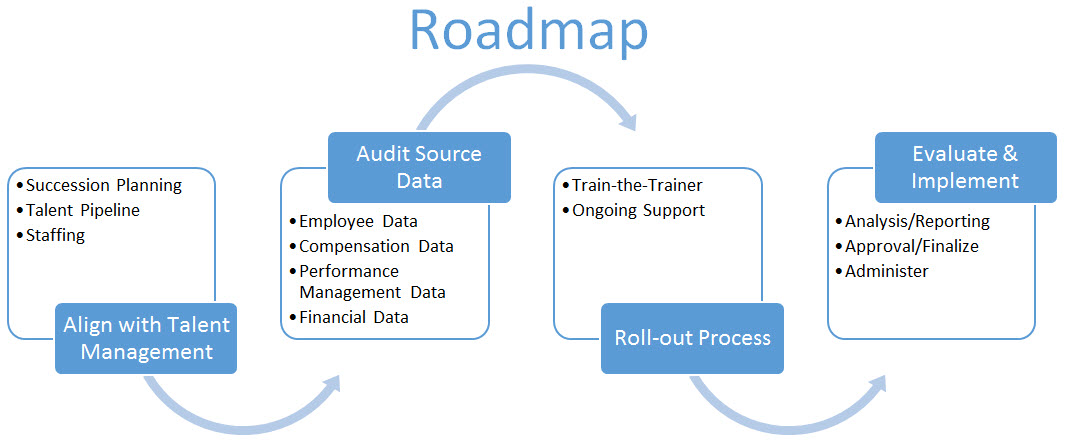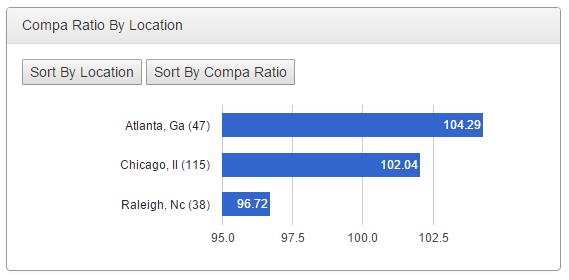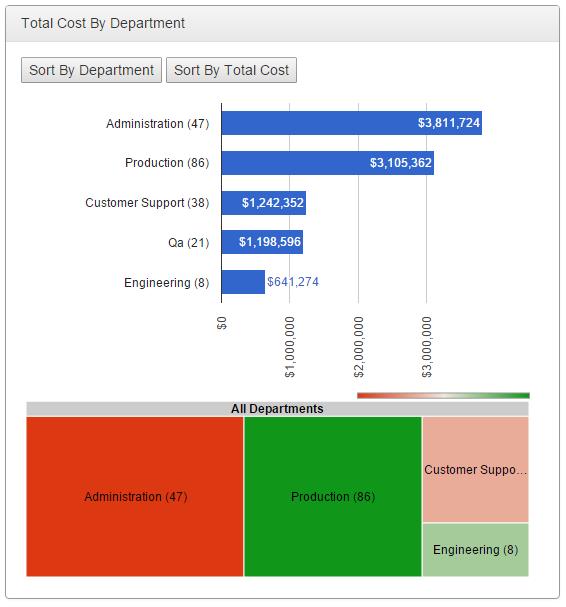Compensation professionals are typically busy this time of the year preparing for 2016 salary increases for employees. If you already have two or three years of experience managing the process, you have likely figured how to smooth out the bumps in the road.
Here is a suggested roadmap that has some underlying best practice assumptions:
- Collaboration: Involve the cross-functional stakeholders to help shepherd the effort and minimize resistance along the way.
- Knowledge sharing: Communicate, educate, and train Human Resources, line management, and approvers.
- Business Context: Align the salary increase process with the overall employee value proposition and business strategy.

Align talent management objectives as they pertain to succession planning, talent pipeline, and staffing decisions. The policies that pertain to new hires, promotions, and transfers need to be well-aligned with succession plans for employees with high potential in order to fill business leadership roles and meet long-term business strategy objectives. Some organizations may have policies that serve as business rules that impact salary increases. Consider the following examples:
- New hires: Typically if hired in Q4 of the plan year, new hires will not be eligible for salary increases.
- Newly promoted: Typically if promoted in Q4 of the plan year, the newly promoted will not be eligible for salary increases.
- Transfers: The receiving cost center is responsible for full allocation and the submission of recommendations with input from previous line managers.
Audit source data, partnering with the appropriate data stakeholders in IT and HR, so that the roll-out process is effective and rework minimized. Several types of data should be included:
- Employee Data: Employee name, employee ID, position title, department, performance manager name, performance rating, time in position, and work location.
- Compensation Data: Salary grade min/mid/max, compa-ratio, market index, and survey data.
- Performance Management Data: Ratings, goals, achievements, and development plans.
- Financial Data: Data specific to business units, departments, and scope.
Roll-out the process using the appropriate tools depending on your budget. Consider using a cloud-based solution that houses salary planning sheets organized by the line manager (such as ERI’s Salary Assessor®) or Excel® spreadsheets. These tasks are critical to a successful roll-out:
- Train-the-Trainer: Depending on the size of your organization, you may need to train HR business partners that support each business unit or train the line management directly.
- On-going Support: Offer and maintain support that may be focused on the technology, some delivered with effective self-service, and include a process for escalations that go directly to the compensation specialist.
Evaluate & Implement
Once the recommendations are submitted, evaluate and review for effective talent management alignment and cost controls. The one-over-one approval process may be done at this stage or in the roll-out process. Having a dashboard of reports to facilitate the final review and approval is helpful. A common analysis is compa-ratio and cost summary as depicted in the images below (Image sources: ERI Salary Assessor salary planning reports):


Summary
Planning salary increases as part of your overall total rewards and talent management efforts can be highly effective when it is well-integrated. Involve the right stakeholders, provide comprehensive and quality information to make effective salary increase recommendations, communicate with purpose using business vernacular, and evaluate the recommendations and process, coaching the business users. Salary increases are one of the financial rewards that organizations can offer. Keep it relevant and evaluate it throughout the year.
Access a more detailed complementary course on planning salary increases by visiting our website, www.erieri.com, or call our “best in class” service team at 1-800-627-3697 for further assistance.



